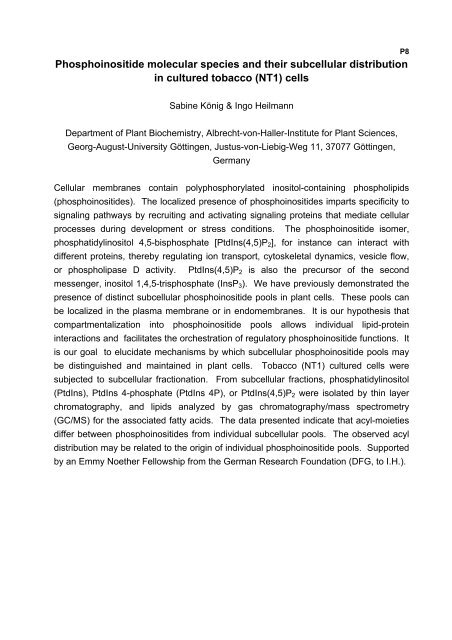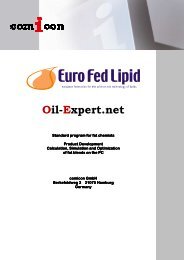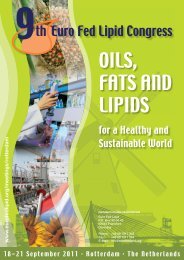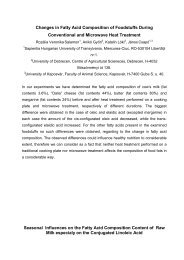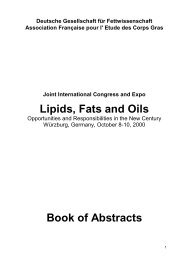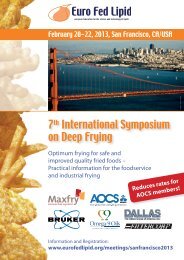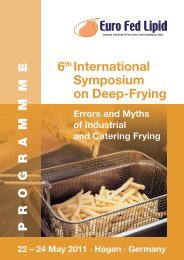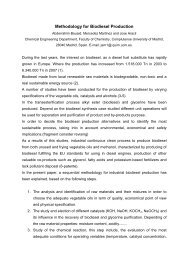Abstracts now available online - Euro Fed Lipid
Abstracts now available online - Euro Fed Lipid
Abstracts now available online - Euro Fed Lipid
You also want an ePaper? Increase the reach of your titles
YUMPU automatically turns print PDFs into web optimized ePapers that Google loves.
P8<br />
Phosphoinositide molecular species and their subcellular distribution<br />
in cultured tobacco (NT1) cells<br />
Sabine König & Ingo Heilmann<br />
Department of Plant Biochemistry, Albrecht-von-Haller-Institute for Plant Sciences,<br />
Georg-August-University Göttingen, Justus-von-Liebig-Weg 11, 37077 Göttingen,<br />
Germany<br />
Cellular membranes contain polyphosphorylated inositol-containing phospholipids<br />
(phosphoinositides). The localized presence of phosphoinositides imparts specificity to<br />
signaling pathways by recruiting and activating signaling proteins that mediate cellular<br />
processes during development or stress conditions. The phosphoinositide isomer,<br />
phosphatidylinositol 4,5-bisphosphate [PtdIns(4,5)P2], for instance can interact with<br />
different proteins, thereby regulating ion transport, cytoskeletal dynamics, vesicle flow,<br />
or phospholipase D activity. PtdIns(4,5)P2 is also the precursor of the second<br />
messenger, inositol 1,4,5-trisphosphate (InsP3). We have previously demonstrated the<br />
presence of distinct subcellular phosphoinositide pools in plant cells. These pools can<br />
be localized in the plasma membrane or in endomembranes. It is our hypothesis that<br />
compartmentalization into phosphoinositide pools allows individual lipid-protein<br />
interactions and facilitates the orchestration of regulatory phosphoinositide functions. It<br />
is our goal to elucidate mechanisms by which subcellular phosphoinositide pools may<br />
be distinguished and maintained in plant cells. Tobacco (NT1) cultured cells were<br />
subjected to subcellular fractionation. From subcellular fractions, phosphatidylinositol<br />
(PtdIns), PtdIns 4-phosphate (PtdIns 4P), or PtdIns(4,5)P2 were isolated by thin layer<br />
chromatography, and lipids analyzed by gas chromatography/mass spectrometry<br />
(GC/MS) for the associated fatty acids. The data presented indicate that acyl-moieties<br />
differ between phosphoinositides from individual subcellular pools. The observed acyl<br />
distribution may be related to the origin of individual phosphoinositide pools. Supported<br />
by an Emmy Noether Fellowship from the German Research Foundation (DFG, to I.H.).


